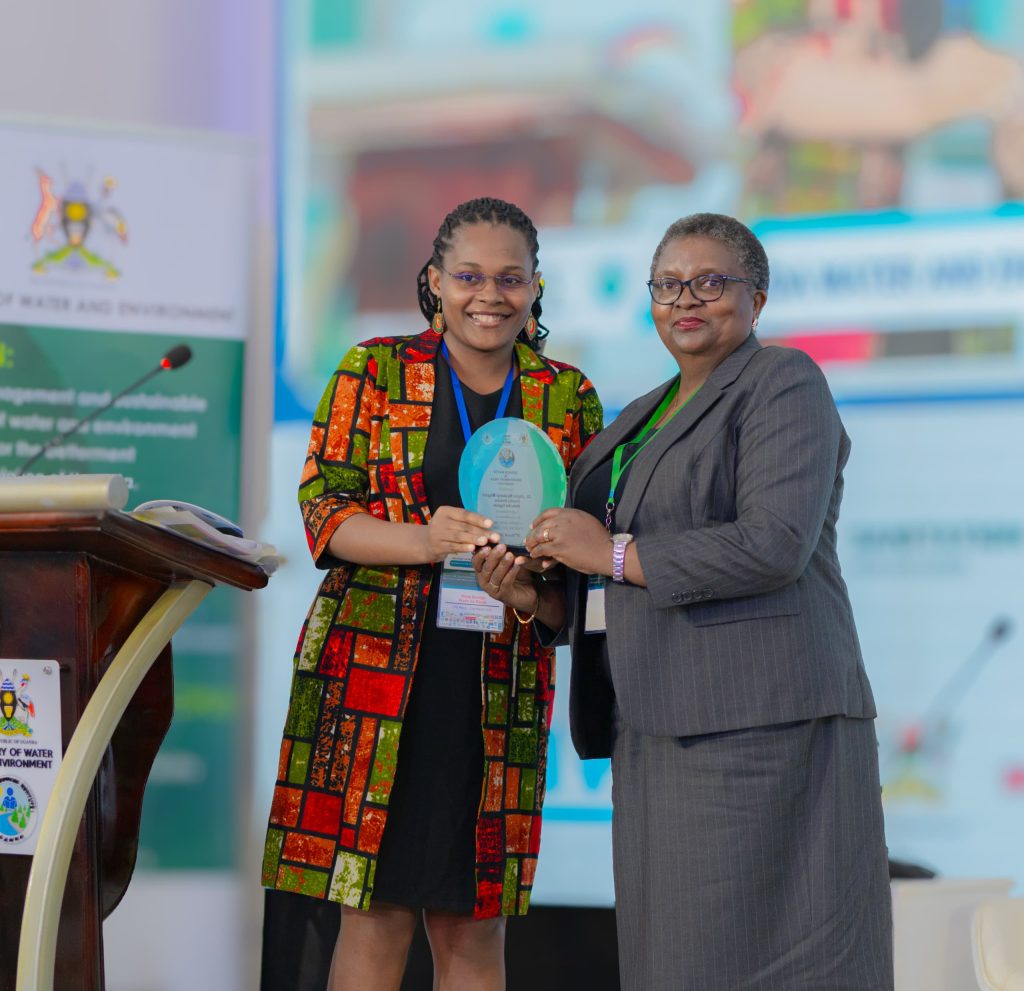With the declining quality of borehole water caused by the corrosion of iron pipes used in their construction, experts are urging the government to prioritise investments in modern piping systems that can preserve the purity of borehole water.
The corroded water not only makes it unsafe for consumption but also compels communities, particularly women and children, to rely on unprotected and hazardous water sources. This exposes them to disease-causing organisms and a host of other challenges.
Joyce Magala, the Country Director of WaterAid Uganda, made the call through the Finance Director, Ernest Atsu Gbekor, who represented her during the unveiling of the Poldaw PVC riser borehole water connection system. This event was held for stakeholders in the water sector as part of the ongoing 8th Uganda Water and Environment Week (UWEWK).
The Water Week is organised annually by the Ministry of Water and Environment (MWE) through the Water Resources Institute (WRI) at the Ministry of Water offices in Luzira on Wednesday. This year, the event revolves around the theme: “Water and Environment Resources for Enhanced Resilience and Improved Incomes and Livelihoods.”
“Current borehole pipes have galvanised iron riser pipes. As these pipes corrode, metal deposits make their way into the water, causing it to turn brown and develop a foul smell and taste, explained Eng. Alfred Ocen, the Masindi District Water Officer.
He added that the new riser system, made of UPVC plastic, reduces the chances of water contamination due to rust and is also sustainable, as it is low-cost and easy to maintain.
“The advantage of UPVC plastics pipes is that the material has been said to be resistant to fractures, can resist inorganic acids, alkalis, and salts, hence keeping the water safe,” Ocen said.
Status of water quality today
Information from WaterAid Uganda indicates that over 60% of rural households rely on hand-pump boreholes as their primary source of water, yet these hand pumps are prone to corrosion and poor water quality.
Additional information from the UpGro study by WaterAid Uganda, conducted between 2015 and 2020, revealed that over 60% of riser pipes were found to be corroded, and 30% were damaged, resulting in high levels of iron exceeding 5 mg/L, which is significantly above the acceptable limit of 0.3mg/L.
Although the Government suspended the use of corrosion-prone materials under the “Stop the Rot Campaign”, alternatives remain costly or impractical for deep installations, according to Magala.
In response, Magala said that with support from the Clinton N. Hilton Foundation, WaterAid Uganda is piloting the Poldaw Riser Pipe Configuration water system in Kabarole and Masindi districts.
She added that, so far, 100 handpumps have been established across the two districts. With the new pipes, water quality has improved in 95% of pumps, with iron concentrations above 5 mg/l dropping from 28% to 1.8%.
Additionally, 43% of the modified pumps experience zero breakdowns annually, compared to the frequent failures in traditional systems, she added.
However, although the new pipes seem to be giving a solution, these are yet to be endorsed by the Ministry of Water and Environment, according to Paul Bisoborwa, a senior sociologist in the Ministry.
Bisoborwa explained that corrosion is the most commonly reported reason for the abandonment of boreholes at the district level, adding that the new piping system will be a game changer, having undergone rigorous scrutiny by a team from the ministry.
He said that, much as the technology is being introduced at a time when a framework through which such innovative technologies can be adopted is being established, there are several steps to follow;
The first step is to assess the technology, considering issues of adaptability, viability, and acceptability, especially among the target communities.
The ministry also wants to ensure that the innovation is compatible with the overall structure of the components used during the installation process.
The technology also needs to be profiled to determine what it requires in terms of maintenance, as well as whether it can be repaired after the promoter has left, among other considerations, he added.



